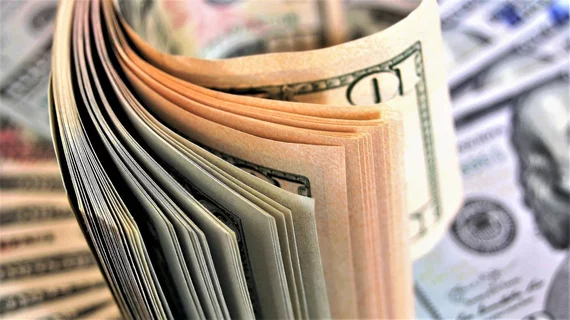Cardiologists received $1.1B in industry payments in 6 years
Cardiologists in the United States received more than $1 billion in speaker fees and other industry payments from 2014 to 2019, according to new findings published in Circulation: Cardiovascular Quality and Outcomes.[1]
“Although industry-physician collaborations can drive crucial scientific discoveries, indiscriminate financial relationships may introduce bias and overutilization in patient care,” wrote first author Ruina Zhang, MD, with the department of medicine at Weill Cornell Medicine in New York City, and colleagues. “In an effort to increase the transparency of industry payments to physicians, the Open Payments Program (OPP) was established and publishes data on industry-physician financial interactions. The effect of OPP on the field of cardiology is not fully understood.”
Zhang et al. linked the OPP database with information from the National Plan and Provider Enumeration System database, focusing on all cardiology payments from 2014 to 2019. They stopped at 2019 due to the beginning of the COVID-19 pandemic and its potential to heavily skew payment numbers.
Overall, cardiologists received $1.1 billion from 2014 to 2019. The total value of those payments fell from more than $210 million in 2014 to more than $164 million in 2019.
These are some other big takeaways from the group’s research:
1. Speaker fees, consulting fees make up a majority of cardiology payments in the United States
Diving deeper into the data, the researchers noted that 40.8% ($444.5 million) of cardiology payments were tied to speaker fees. Another 19% ($207.7 million) were from consulting fees.
Speakers fees dropped significantly over the study’s six years, decreasing from more than $114 million in 2014 to approximately $54,000 in 2019.
“Reduction of payments in this highly visible category may be attributed to an environment of increased transparency and associated heightened public and peer scrutiny,” the authors wrote.
Consulting fees, meanwhile, increased from more than $29 million in 2014 to more than $33 million in 2019. The third biggest category, food and beverage-related payments stayed relatively the same over the course of the study, decreasing by less than $900,000 from 2014 to 2019.
2. Most large payments are going to a select few cardiologists
Seventy-six percent of the cardiologists included in this study received “relatively small payments” of less than $10,000 each per year, accounting for a total of $61.4 million.
On the other hand, 0.3% of cardiologists received more than $1 million each per year, accounting for $268.3 million.
3. The number of cardiologists receiving industry payments has stayed the same
While the total value of industry payments going to cardiologist is down significantly—likely directly due to the OPP program, among other things—the number of cardiologists receiving payments is relatively unchanged. While 25,989 different cardiologists received payments in 2014, for example, 26,536 different cardiologists received payments in 2019. That number was at its highest in 2016, when 27,221 different cardiologists received payments.
The authors concluded that “further targeted measures that address financial conflicts” may be useful going forward to help build on some of the changes seen after the OPP went into effect.
Read the full analysis here.

